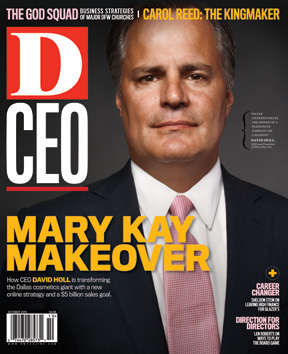Mark Dotzour, Ph.D., the chief economist and director of research for the Real Estate Center at Texas A&M University, has a surprising recommendation for jump-starting our still-sputtering economy:
Look to Calvin Coolidge.
Coolidge is Dotzour’s “hero” because he said, “The chief business of the American people is business.” The 30th American president also declared, “The collection of any taxes which are not absolutely required, which do not beyond reasonable doubt contribute to the public welfare, is only a species of legalized larceny.
And: “The method of raising [tax] revenue ought not to impede the transaction of business; it ought to encourage it. I am opposed to extremely high rates, because they produce little or no revenue, because they are bad for the country, and finally, because they are wrong.”
During an August presentation to the North Texas chapter of CCIM, a commercial real estate group, Dotzour spoke so admiringly of Coolidge and his views because, in our current economic dilemma, Dotzour sees history repeating itself—to our longterm detriment.
Back in the 1920s, Dotzour told the group, the top U.S. marginal tax rates plummeted from more than 70 percent in 1917 to less than 30 percent under Coolidge. Meantime, between 1927 and 1929, the stock market rose 134 percent (as measured by the Standard & Poor’s index).
Then came The Crash of ’29 under Coolidge’s successor Herbert Hoover, and the market fell nearly 40 percent in three months. A worldwide banking crisis took hold and, by June of 1932, the market had dropped to 85 percent below its 1929 peak.
It’s in the reaction to these events—under both Hoover and Franklin D. Roosevelt—that Dotzour sees warning signs for the U.S. in 2010. Under Hoover, he explained, Congress passed a massive tax increase in 1932, boosting the top marginal rate to 63 percent from 25 percent. More than 4,000 more banks failed early the next year.
Hoover also created something called the Reconstruction Finance Corp. to make loans to banks and railroads. The RFC eventually moved into acquiring stock in banks and, under FDR, began making direct loans to businesses and imposing salary caps on the executives of railroad and insurance companies. (Sound familiar?)
Meantime, Dotzour pointed out, the stock market in 1938 was 68 percent below its 1929 peak and, by April 1942, had fallen to 75 percent below the peak. FDR’s temporary hiring programs like the Works Projects Administration failed to resolve high unemployment, and the economy didn’t really start to perk up until 1940, when the government began issuing cost-plus contracts for defense spending.
So what does all this mean for us today?
“Hoover’s policy mistakes were raising taxes and tightening credit,” Dotzour said. “What are we doing in 2010 and 2011? Raising taxes and tightening credit. It didn’t work well in the 1930s, and it won’t work well this time, either.”
Today small business owners are still frozen with uncertainty, he warned. States, cities, counties, and school districts have yet to rein in their spending. Public debt has skyrocketed. And the uncertainty of government regulation remains a “killer” for business expansion.
The big risks now, in Dotzour’s view? That public employees will balk at cost-cutting measures. That higher income tax rates will reduce consumption and investment. And that Congress will continue its adversarial attitude toward business.
Said Dotzour: “We need positive signs from Washington that say business is a valuable part of this country.”
What we need, in other words, are more people in the nation’s capital like Silent Cal.






